Good copywriting isn’t just about writing words—it’s about understanding what makes people take action. The difference between a brand that sells and one that struggles isn’t just the product—it’s how that product is positioned in the customer’s mind.
One of the biggest mistakes businesses make in advertising is thinking they need to convince people to want something. That’s not how great copy works.
Eugene Schwartz, one of the greatest copywriters of all time, put it perfectly when he said:
“Copy cannot create desire for a product. It can only take the hopes, dreams, fears, and desires that already exist in the hearts of millions of people, and focus those already-existing desires onto a particular product.”
This quote encapsulates one of the most important truths in marketing: People already want things. They want to be healthier, wealthier, happier, more secure, more attractive and more respected. Your job as a copywriter is not to convince them to want these things—it’s to show them how your product helps fulfill those existing desires.
Do you know what brands like Jocko Fuel, Rocksbox and Sunday have in common? It’s one thing: their excellent copywriting.
In this blog, we will explore some best practices those brands use in their copywriting to get amazing results.

Copywriting Best Practices
Good copy doesn’t happen by accident. It’s a mix of strategy, psychology and craft—and the best copywriters follow a repeatable process. Whether you’re writing an ad, a product page or an email, these three principles are essential for copy that actually sells.
Here are some best practices you need to keep in mind when writing:
1. Know Your Customer
Before you can sell anything, you need to deeply understand who you’re selling to.
Demographics are important (sex, age, location…), but what’s more important are their desires, fears, frustrations and motivations—and how they make decisions.
Here’s how to start:
- Begin with your BDQs–Buyer Decision Questions. These are the core questions your ideal customers ask themselves before buying. For example: Will this actually work for me? Is it worth the price? What makes this different from everything else I’ve tried?
- These BDQs should reflect the mindset of your best customer—not just anyone who might stumble onto your product. Speak to the ones most likely to convert.
- Read customer reviews and ad comments—there’s gold there. Look for exact phrases customers use to describe their pain points, doubts and breakthroughs. You’ll often find better copy in their own words than anything you could invent.
Once you know who your customers are and what they want, let’s move to the next step.
2. Know What Value You Bring
If your audience doesn’t immediately understand the value of what you’re offering, they’ll bounce. Fast.
Here’s how to highlight what matters:
- Benefits > features–features tell; benefits sell. Instead of “This app has real-time notifications,” say “Know what matters, the moment it happens.”
- Demonstrate value clearly–what’s the problem, and why is this product the best solution? Make that connection crystal clear.
- Tell a story–people remember stories. A mini narrative with emotional stakes can do more than a list of specs. Even a few lines about someone’s transformation using your product can build massive trust.
Always ask: How does this make the customer’s life better, easier or more exciting? That’s your core message.
3. Hook Them Quickly & Replicate What Works
In a world of 2-second scrolls, your copy needs to hook fast—or it’s lost.
Here’s what matters:
- Your hook is your make-or-break moment. Whether it’s the first line of an ad, the subject line of an email or the headline of a landing page, you need to grab attention immediately.
- It should:
- Spark curiosity,
- Hit a pain point,
- Make a bold promise, or
- Trigger emotion.
- Replicate what works. If a hook performs well—keep it. Use similar formats, tones and emotional triggers in future ads. Study past winners and reiterate.
Let’s see how some brands put these best practices in action.
Jocko Fuel: #1 at Understanding Their Audience
If there’s one brand that nails audience alignment, it’s Jocko Fuel. Everything, from their product names to their tone of voice—shows they deeply understand who they’re talking to, what those people care about and how to speak their language.
Their audience isn’t the casual gym-goer or someone looking for a trendy health drink. It’s the disciplined few: military professionals, athletes, high-performers, people who wake up at 4:30 a.m. on purpose (or the ones who have read Robin Sharma’s books) and those who believe in hard work, ownership and no excuses.
Jocko Fuel knows exactly who they’re talking to: disciplined people. So their copy doesn’t try to explain or sell discipline—it assumes it. That level of understanding allows them to skip the fluff and speak directly to the mindset of someone who’s in pursuit of excellence.
You see this in everything they write:
“Stay in the fight.”
“No sugar. No crash.”
“Formulated by Jocko Willink.”
This level of clarity comes from doing the work:
- Starting with the BDQs their audience asks (e.g., Can I trust this? Will this help me perform?)
- Studying how their customers speak in reviews and comments
- Aligning every message with a specific kind of person—not the general public
They don’t just sell supplements. They sell alignment with a way of life. That’s what happens when you truly know your audience.
Rocksbox: Highlighting Value Like a Diamond
Rocksbox also knows exactly who they’re speaking to—and what they most value. Their tone is elegant, chic and thoughtful, designed to connect with women who love fashion, self-expression and trying new styles.
The copy feels delicate yet confident, just like the pieces they offer. Even their use of emojis is intentional—💍✨—adding a playful, stylish touch without ever feeling over the top.
Rocksbox excels at showcasing the value of their jewelry subscription service by emphasizing the benefits that resonate with their target audience. Here’s how they do it:
Benefits Over Features
Instead of merely listing features, Rocksbox focuses on the advantages their service offers:
- Try Before You Buy: Members can experiment with different styles without immediate commitment, ensuring satisfaction before making a purchase.
- Unlimited Exchanges: The flexibility to swap pieces as often as desired keeps the jewelry collection fresh and aligned with current trends.
- Exclusive Discounts: Members receive special pricing, adding value beyond the rental service.
Addressing Customer Pain Points
Rocksbox understands common challenges jewelry lovers face:
- Indecision: Choosing the right piece can be daunting. Rocksbox alleviates this by allowing members to try multiple pieces before deciding.
- Cost Concerns: High-quality jewelry often comes with a hefty price tag. Rocksbox provides access to premium pieces at a fraction of the cost.
- Style Evolution: As personal styles evolve, so do jewelry preferences. Rocksbox’s model supports this evolution without the need for permanent purchases.
Rocksbox’s copywriting essence is the same on all their platforms: landing page, email, social media… Instead of hard-selling, they paint a lifestyle: freedom to try new styles, express yourself and swap jewelry as your mood or outfit changes. It’s subtle, but every post reminds you: This isn’t just jewelry—it’s a feeling.
Sunday: Make It Clear from the Start
Sunday’s copywriting also immediately addresses their customers’ common pain points. At the same time, they factor in their audience’s aspirations, using strong hooks that resonate with their customers’ desire for beautiful lawns without the hassle.
Sunday’s target audience is homeowners, particularly families residing in suburban areas, who take pride in maintaining a lush, green lawn. That’s why their tone is friendly, casual and helpful—like a neighbor who happens to know a lot about grass. There’s no pressure, no technical jargon and no “perfect lawn” snobbery. Just copy that says: “We’ve got you. Let’s make this easy.”
They’ve mastered the art of going straight to the point by using hooks that are super clear and confidence boosting. Here are some examples:
- “Everything you need, nothing you don’t.”
→ Minimal, clean and instantly communicates value - “Safe, easy, and effective—everyone is a lawn pro with Sunday.”
→ Removes doubt and empowers the customer right away - “Traditional lawn care is toxic. Yours doesn’t have to be.”
→ Strong contrast, speaks to eco-conscious values and makes Sunday the smarter choice
Sunday’s copy grabs attention fast because it speaks directly to a specific lifestyle and set of values. It’s not just about lawn care—it’s about making lawn care easy, safe and stress-free for the people who need that most.
Sunday’s copy is effective because it’s simple, clear and reassuring. Their fast, benefit-first hooks make lawn care feel doable, even for beginners—and that’s exactly what their audience needs.
Master the Art of Copywriting
Great copy isn’t about clever words—it’s about clarity, connection and strategy. When you know who you’re talking to, what they truly care about, and how to grab their attention fast, you’re not just writing—you’re selling with purpose.
Jocko Fuel shows us the power of knowing your audience. Rocksbox proves how highlighting real value makes all the difference. And Sunday reminds us that hooking someone quickly can be done with simplicity and heart.
So whether you’re building a landing page, writing an ad or launching a new brand voice, start here with your copywriting:
✅ Know your customer
✅ Show them the value
✅ Hook them right away
The best copy feels effortless, but it’s built with intention. Get that part right, and the rest will follow.
Ready to Write Like the Best?
If you’re looking for a team that can generate fantastic copy for your ads and landing pages, Primer is here to help you. Our breadth of experience means we see what works in many different verticals, placements, platforms and audiences. We bring that knowledge (backed by extensive data and proven success) to every account we service.
Your Growth Marketing Team: Partnering with Primer means we take care of everything—strategy and planning, copywriting, production, reporting and optional media buying—to achieve your growth objectives. You can focus on your business while we deliver the results.
Creative On Demand: Access a subscription-based marketing creative platform to request UGC, videos, images and landing pages crafted by top marketing creative strategists and designers who understand what drives conversions.
Marketers aren’t fighting for attention; they’re fighting for emotional connection.
In a world where every scroll is a decision and every second counts, it’s important to say the right thing and engage from the beginning.
That’s why the best-performing ads aren’t just clever.
They’re emotionally charged.
They speak directly to the viewer. And often, all it takes is one power word to flip the switch.
Power words are persuasive, high-impact words that trigger an emotional or psychological response.
They spark curiosity. They create urgency. They make people feel understood, excited, even obsessed—and most importantly, they make people act.
You don’t need to be a seasoned copywriter to use them.
Even one of these words—dropped into a script, headline or CTA—can turn passive viewers into engaged customers.
In this post, we’re breaking down the exact categories of power words we use in ad scripts that convert, plus examples you can plug straight into your next campaign.
Let’s get into it.
🔥 Urgency/Scarcity
- Limited
- Today only
- Last chance
- Hurry
- Ends soon
- Now
- Deadline
- Don’t miss out
- Final hours
- Almost gone
- Only X left
- While supplies last
- Selling fast
- Clock’s ticking
➡️ Great for: retargeting. Use these words for flash sales, countdown offers, abandoned cart emails.
💥 Emotional Triggers
- Love
- Hate
- Fear
- Crave
- Imagine
- Obsessed
- Shocked
- Can’t live without
- Game-changer
- Mind-blowing
- Regret
- Addicted
- Must-have
- Impressed
- Controversial
➡️ Great for: high-engagement hooks, storytelling ads, lifestyle brands.
💎 Value-Driven
- Free
- Exclusive
- VIP
- Bonus
- Save
- Limited-time offer
- Instant access
- No-brainer
- Get more
- Extra
- Special deal
- Just for you
- Bargain
➡️ Great for: subscription services, lead gen, product launches.
🧠 Curiosity & Intrigue
- Secret
- Insider
- Hidden
- Discover
- Uncover
- Revealed
- Psssst… attention
- Little-known
- What no one tells you
- The truth about
- Sneak peek
- Guess what
- You won’t believe
- Do you know…?
➡️ Great for: lead magnets, blog ads, native content promotions.
💪 Confidence & Trust
- Unknown
- Insider
- Hidden
- Discover
- Uncover
- Revealed
- Little-known
- What no one tells you
- The truth about
- Research-based
- Approved
- Safe
- Secure
- Industry-standard
- Let’s be honest…
➡️ Great for: conversion-focused copy, testimonials, long-form ads.
Power Words in Action
Let’s look at how brands are using power words to drive clicks, build trust and boost conversions—without sounding salesy.
This ad kicks off with a controversial opinion, which instantly grabs attention.
It sparks curiosity: “Who would say that?” “How could that be true?”.
This brand taps directly into both curiosity and emotion, using power words and tone to keep viewers watching.
Similarly, this one starts with a refreshingly honest opinion, which immediately builds credibility.
It feels raw, real and unscripted. That honesty, paired with subtle power words, helps customers drop their guard and lean in.
Why Power Words Work
Power words aren’t just trendy—they’re rooted in how our brains work.
They tap into emotions, primal instincts and cognitive shortcuts that help us make decisions faster. When someone hears “exclusive,” their brain registers status. When they see “ends soon,” they feel urgency. When they read “secret,” they’re hooked by curiosity.
And when these triggers are used intentionally—in headlines, scripts or CTAs—they quiet the noise and make your message the one that lands.
You don’t need more words. You just need the right ones.
Try swapping 2–3 bland words in your next ad with power words from this list.
Test the difference.
Then do it again.
Words have power. Use them to convert.
Partner with Creative Experts
At Primer, we don’t just talk about power words—we use them every day to write high-performing ads that stop thumbs and spark action. From brands like Jocko Fuel to Sunday and Rocksbox, we help teams concept and write UGC ad scripts that feel real, convert fast and hit emotionally. Whether you need hooks that hook harder, CTAs that convert or full-funnel copy that actually sells—we’ve got you.
Your Growth Marketing Team: Partnering with Primer means we take care of everything—strategy and planning, production, reporting and optional media buying—to achieve your growth objectives. You can focus on your business while we deliver the results.
Creative On Demand: Access a subscription-based marketing creative platform to request UGC, videos, images and landing pages crafted by top marketing creative strategists and designers who understand what drives conversions.
Have you ever heard that your ads are only as strong as your buyer persona? …You mean, that’s not something commonly discussed at dinner tables? Never fear! This is the article for you. We’ll break down what buyer personae are, why they’re useful, and why they’re crucial for creating ads that attract customers and help your business hit its goals.
While many advertisers focus on graphics and design, high-quality copy can be the difference between run-of-the-mill performance and massive wins. In this post, we share top-performing 25+ ad copy templates you can apply to your ads and explore why they work, along with real examples from ads we’ve launched for our partners.
1. The Listicle
It works for Buzzfeed for a reason. Do you remember in high school English class when your teacher told you to “outline your essay in your intro”? Use the same technique when creating paid media ads. People love knowing what to expect and are more likely to engage when the introduction specifies what they’re getting, like starting out with a clear number — e.g., 10 reasons families love [Product Name].
Having the number explicitly stated also generates curiosity— Why 10 reasons? What is number 4? Number 10? Is each info I’ve been missing in my life?
Once people start reading, they may not want to leave: if they stop at number 4, e.g., they may always wonder what numbers 5 through 10 were.
Think of the listicle as a table of contents for what potential customers expect from your website. These should be the main points they pick up from your landing page or homepage. Think of answers to key buyer decision questions like:
- What problem does your product solve?
- What do customers feel after using your product?
- Why should customers pick your product over another’s?
- What, exactly, are you selling?
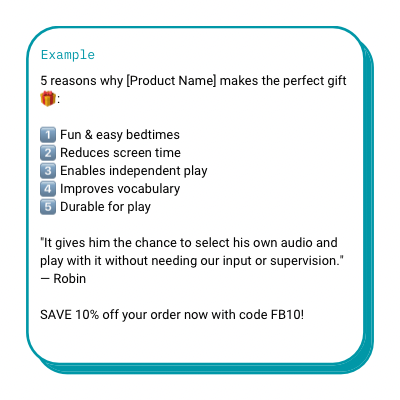
2. Start with a Killer Testimonial
Social proof is a huge validation for potential customers. Leverage it in your ads by starting off with a testimonial from a customer or press outlet that shouts, “this is amazing!”
When pulling testimonials, look for those that include your company’s Unique Selling Points. That way, instead of telling potential customers your USP (and risk having them think you’re just overselling your product), let them hear the USP from a real, happy customer!
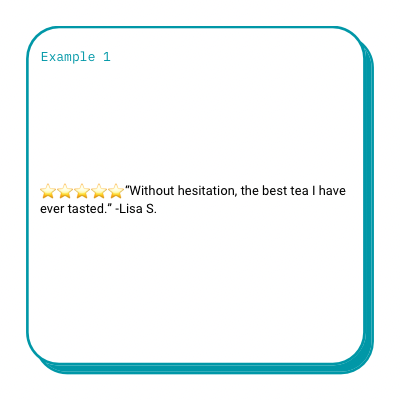 |
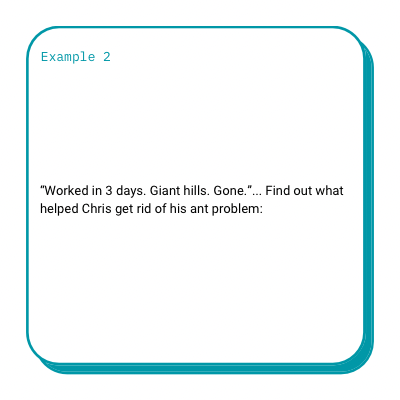 |
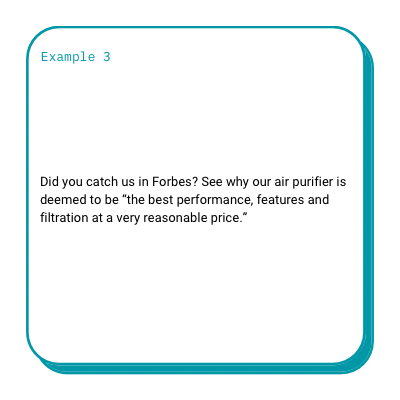 |
3. The Award-Winner
To lend credibility to your business, start your copy with awards you’ve won or places you’ve been featured.

4. Solve Their Problem in One Sentence
Use the first sentence of your copy to succinctly and clearly call out customer problems and solutions. Everything after that (including a clear call to action) is just icing on the cake.
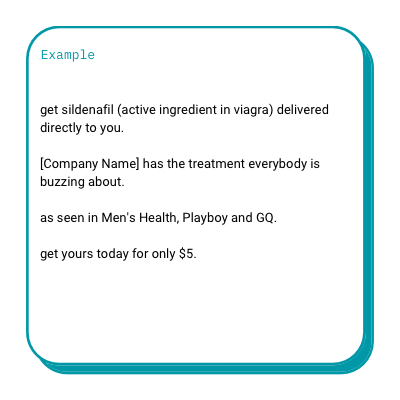
5. Emoji-Lover
Make your first-line copy quicker to read by demonstrating key points with emojis.
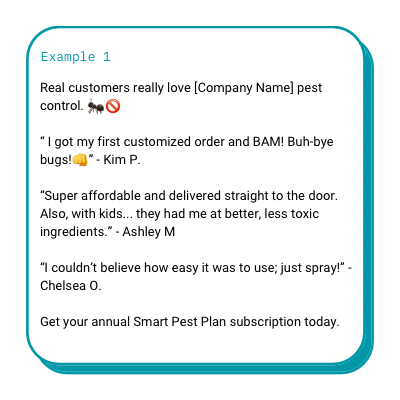 |
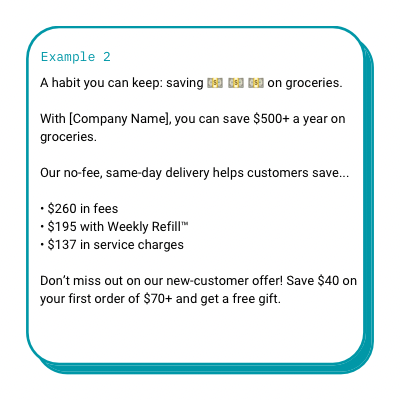 |
6. Multiple Choice
When you let your kid pick between, let’s say, McDonald’s and Wendy’s, they’ll feel like they had a say in their decisions and got what they wanted…even though you had already narrowed the choices for them. The same general principle applies to multiple choice copy. You get four great things out of it:
- The scrolling thumbs stop to engage in the quiz or poll, or to offer comments.
- Readers feel like they’re interacting with the copy by thinking about and choosing their answer.
- Each answer shows off a value prop for your product, so that no matter what they choose, they like a benefit of your product.
- In thinking about their decision, users are actively engaging with your value props and reflecting on what your product provides (even sometimes without knowing it). This analytical thought process helps your product stick in their minds more.
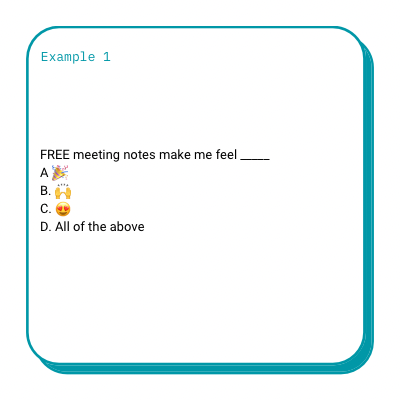 |
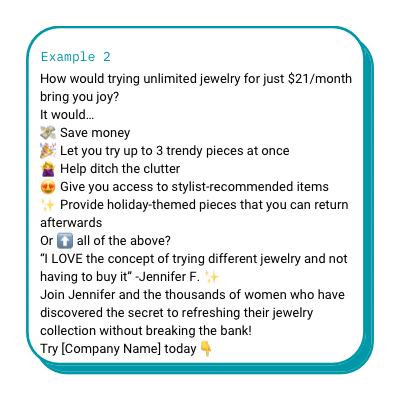 |
7. Capitalized Keyword Call-Outs
While you can’t set keywords in Facebook like you can in Google Ads, you can give the same feel by capitalizing important words that will stand out when users are scrolling.
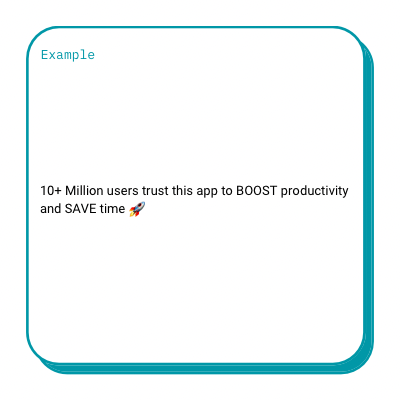
8. Playful Hook
When you start out with interesting or playful copy, scrollers will want to read the rest of your post. It’s kind of like a good story: If you have a strong hook, they’re going to want to read on to see what happens.
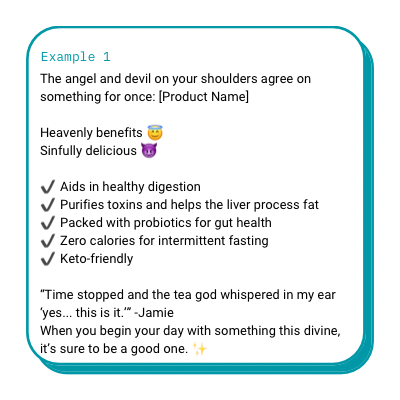 |
 |
9. Local Call-Out
Everybody loves feeling seen. If your brand offers local products, city-specific services, and anything geographic-specific, try calling out those residents in your copy. Seeing something that feels local is much more likely to stop their scrolling.

10. Bye, [Alternative] 👋
Bring a bit of irreverence and humor into your copy by waving goodbye to the alternative. With just a couple of words, you can clearly convey what you’re setting your business up as an alternative to.
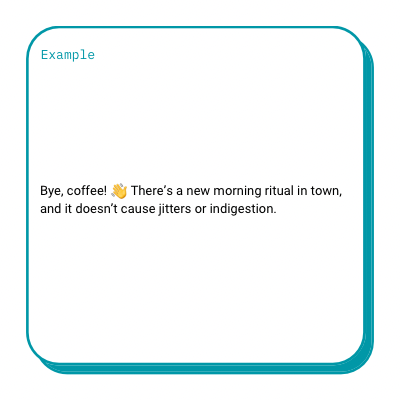
11. Before You Try [Alternative]… Watch This
Most of us can recall Billy Mays’ energetic timber calling out “But wait! There’s more!” While social media ads generally need a little more finesse than that, you can get the same straightforward, powerful energy as Mays’ infomercials with this style of copy:

12. What Makes Ours The Best?
Channel a movie high school speech and utilize rhetorical questions to get potential customers thinking about value props in an organic way. These could take various forms, but one of our favorites is…
What makes [the product type] the best?
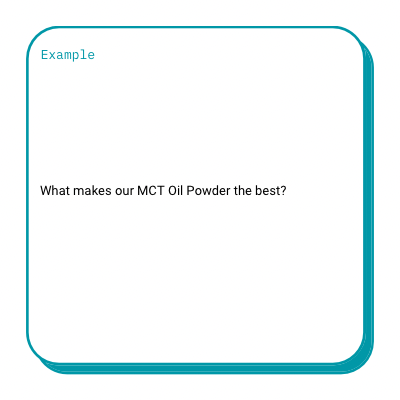
Bonus points if you use any of these (also great) ad copy variations:
- Hate [the worse alternative]?
- Try this! Hate going to the doctor? Watch this!
- Thinking about trying [product type]?
- Thinking about trying fresh pet food?
- Thinking about [the worse alternative]?
- Thinking about doing your taxes by hand?
- Still [the worse alternative to the product]?
- Watch this: Still wasting time on drug store errands? Watch this:
- Are you [accomplishing the goal optimally]?
- Are you using the right protein powder for your body?
13. “Value prop” is our middle name
It’s fun and playful and gets straight to the heart of why people should become your customer.
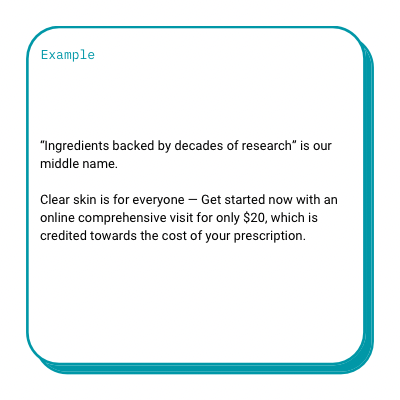
14. Lead with Your Discount
Marketers know that a good discount can actually make a company more money in the long-run. If you have a strong discount, put it in your copy to entice people into trying your product.
You can re-frame evergreen offers as “holiday specials” for key times of the year where ad auction competition increases — like Black Friday, Christmas, and Valentine’s Day.
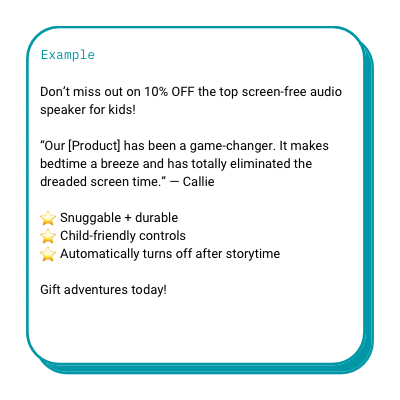
15. Call your brand/service a “secret” in the first line
FOMO is a strong purchase-driver. You may already know that word of mouth sells. Branding your product as “a secret” taps into the same desire to buy what other people value. The element of gaining secret knowledge that only some people have adds to the feeling of exclusivity.
Potential customers want to fit in with the taste makers who already like your product. But they want to stand out as special — having unique knowledge and being an early adopter of what’s cool.
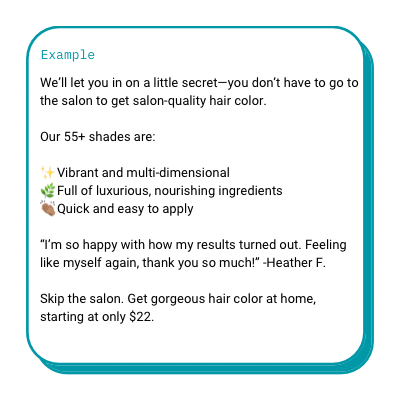
16. Holiday/Seasonal Call-Out
Mentioning the season or holiday around the time you’re running your ad helps it feel new and timely. For major gifting holidays, like Christmas, mentioning that your product suits the holiday can also relieve potential customer’s stress: you know exactly what they’re going through and have the solution — why yes, your wife would love this as a gift.
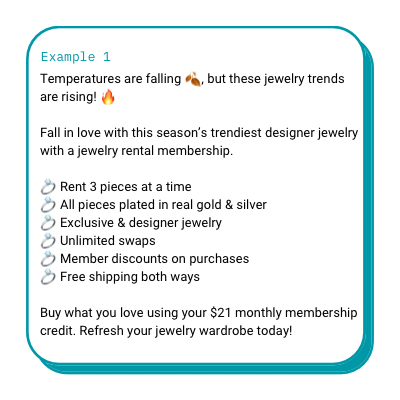 |
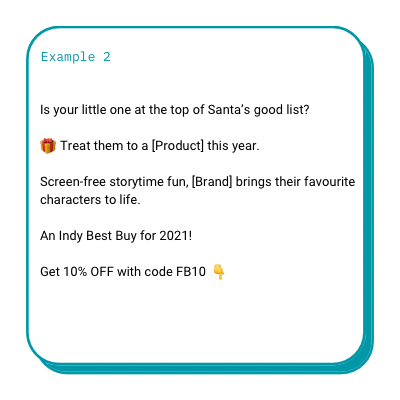 |
17. So Punny
What can we say? People love puns. They also groan at them. They love to groan at them. No matter what, puns stick in people’s brains. And when they pop up again in customer’s thoughts, it’ll be a free reminder of your product.
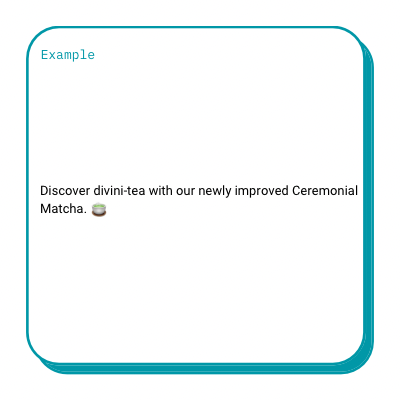
18. Retargeting Call-Outs
If you’re running retargeting/remarketing ads, be sure to include some retargeting-specific copy. It can make customers feel more understood when they see your ads.
Instead of focusing on introducing customers to what your product is, use your retargeting copy to offer additional value about your brand. Speaking to their decision process can also make customers feel seen, which can make them feel closer to your company and more likely to hit “buy”.
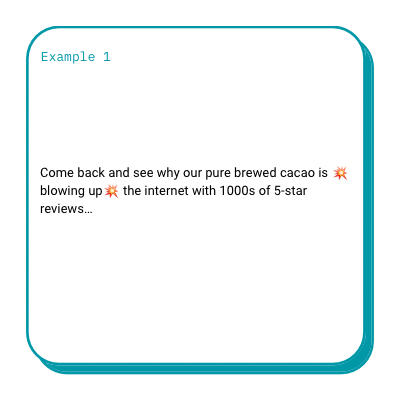 |
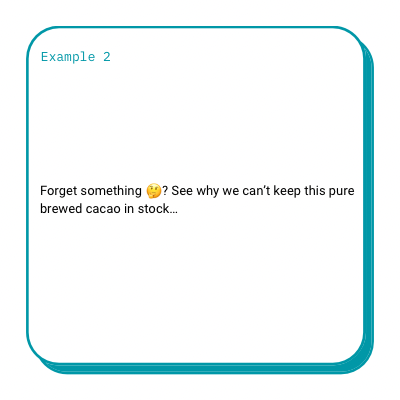 |
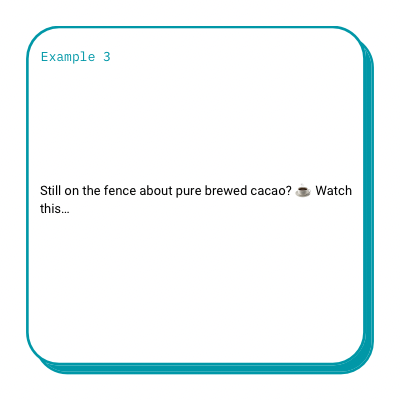 |
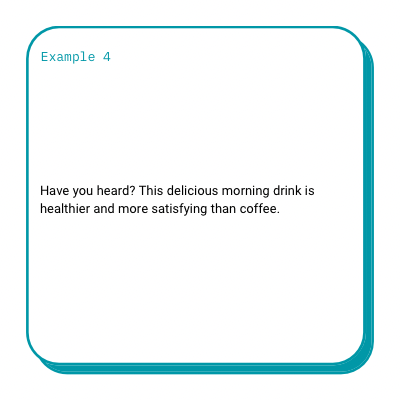 |
19. “Almost Sold Out”
Create a sense of urgency by referencing countdown deals, limited-time offers, and almost-sold-out stock.
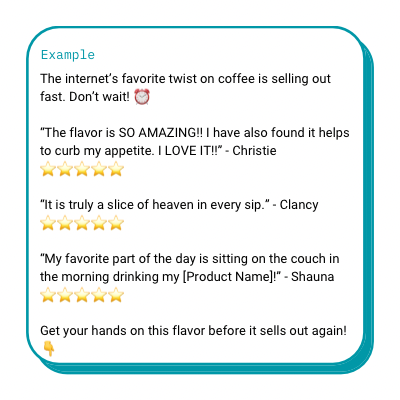
20. Define Something Industry-Wide
Help offer value to your customers by giving them knowledge they didn’t have before. This will help establish you as a credible source of both information and solutions.
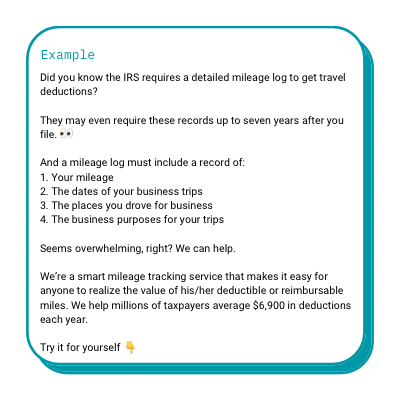
21. How it Works
Tell your potential customers explicitly how your service or product works to help them feel more confident in your company. Services, subscriptions, and SaaS would particularly benefit from this style of copy.
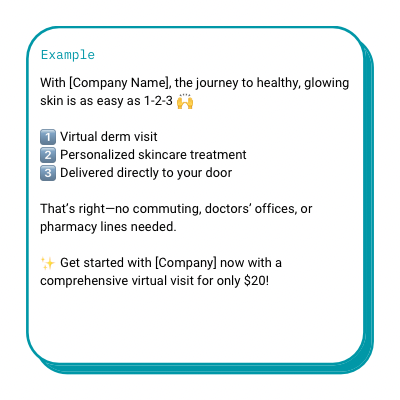
22. Humor
Not only does humor help improve people’s opinions about your brand, but it can also get more reactions (be prepared for your post to be covered in the crying-while-laughing emoji). And more reactions generally means increased exposure for your company — be it through people sharing to their feeds, word-of-mouth discussions about your ad, or people following your company’s page for more content.
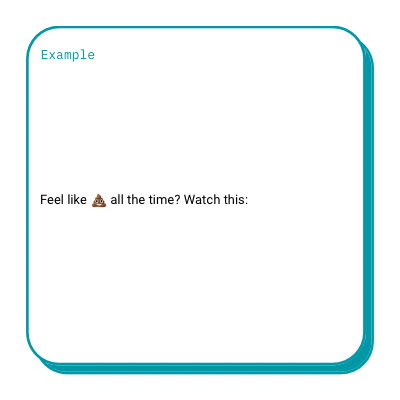
23. Meme Speak
A great variation on humor, if you need a place to start, is by looking at trending memes. Replicate what’s popular on text-heavy sites like Twitter, Reddit, and Tumblr but find a way to tie it into your product.
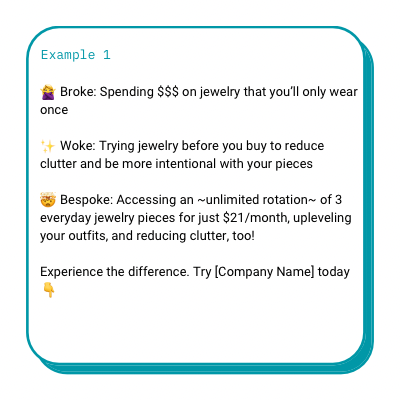 |
 |
24. Value Prop Equation
This ad copy template offers an easy and simple way to convey the benefits of your product by breaking it down to its useful components. These short and sweet equations can show the user what your product is, how it differs from the competition, and why it brings value to the user.
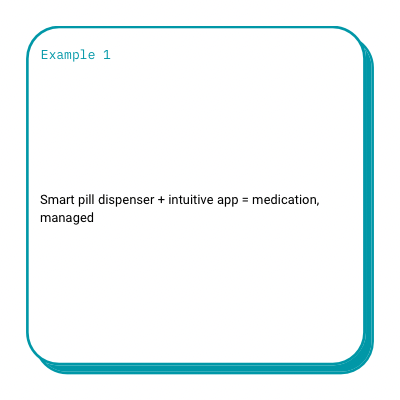 |
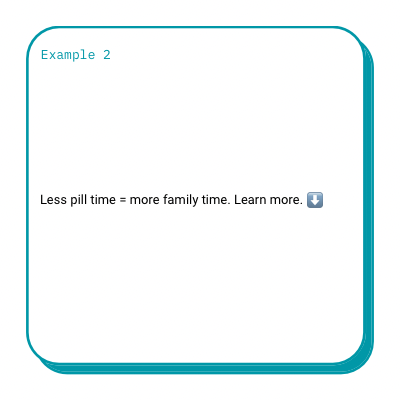 |
25. Facts & Stats
Nothing says “industry expert” more than backing up your claims with data. Pull potential customers in with real facts that match up with your product.
This is particularly useful for beauty, health and wellness, and medical brands.
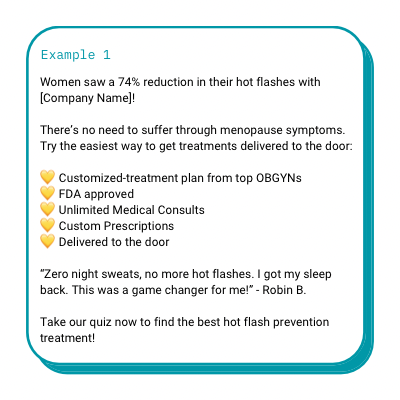 |
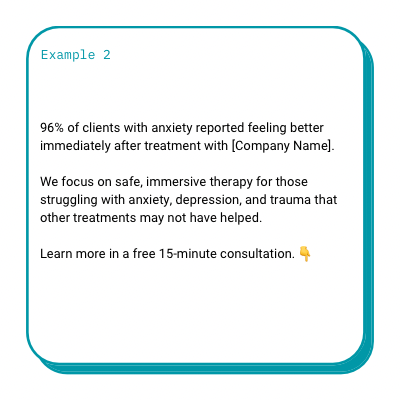 |
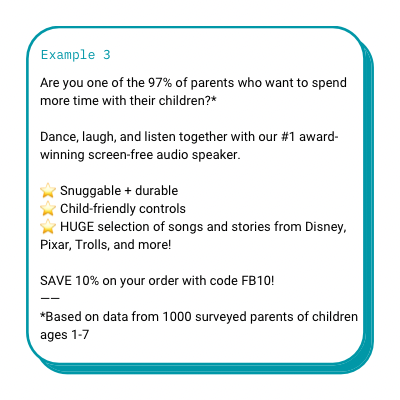 |

Ready to Write Performance-Fueling Ads?
There you have it — 25+ ad copy templates that really worked for our partners. Make sure to test out your copy using our Outlier Method.
If you’re looking for a team that can generate fantastic copy for your ads, Primer can help. Our wide range of partners means we see what works in many different verticals, placements, platforms, and audiences. We bring that knowledge (backed by extensive data and proven success) to every account we service.
Find out how you can start hitting goals with our high-volume strategy with a growth consultation.


